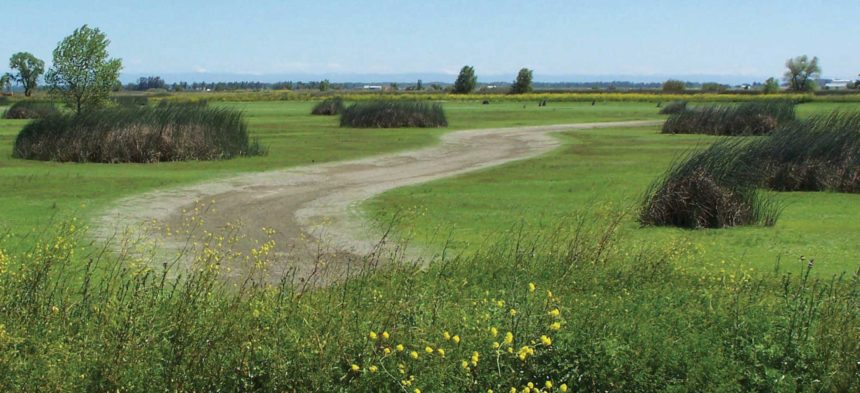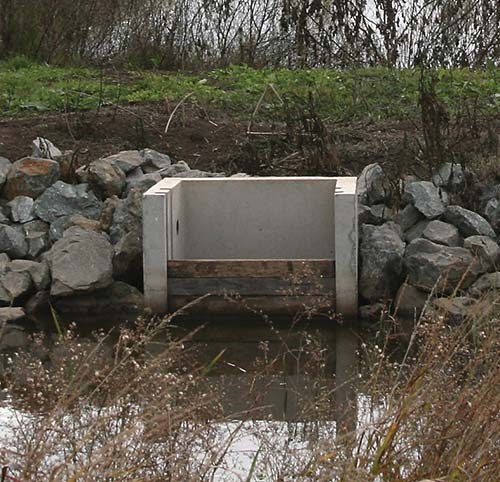Seventy percent of California Waterfowl’s work as an organization is restoring and improving waterfowl habitat all over the state.
We increase waterfowl production by adding nesting areas and brood ponds, and we improve hunting by creating habitat that’s attractive to the millions of ducks and geese that come here for the winter. Click or tap on the dots below to see details of our recent projects on public land and on California Waterfowl-owned properties. On properties where work is taking place on multiple units, the pin is dropped in a central location.
Click here to see the 2020-21 map full screen (opens in a new tab - best if you are viewing on a mobile device), and click here to meet our Waterfowl and Wetlands staff.
WHAT’S A …
Swale: A wide, shallow channel that drives water through a wetland unit to the drain structure.

Swales make flood-up and draining more efficient.
Pothole: An area that, when flooded, will be about six inches deeper than surrounding areas. Because it floods first, it retards vegetative growth, meaning you have a place to put decoys that birds in the air can see.
Water control structures: Concrete or plastic structures in which boards can be stacked like a small dam to raise the elevation of the water on one side.

Water control structure
Brood pond: Designed to provide food and LOTS of cover for flightless ducklings, and water at least 2 feet deep to prevent predators from running down ducklings. Can be good for hunting if some cover is removed after broods are done with it.
Moist-soil plants: Plants such as smartweed, watergrass and swamp timothy – the big three seed producing plants that ducks want to eat - that grow best with an irrigation or two to maximize their seed production, rather than under water.


